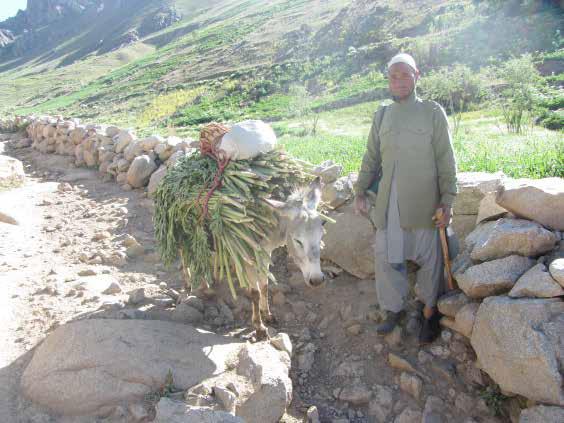Sardar Amiri
This project will develop a landscape management and conservation education strategy for upper catchment conservation sites as part of improved environmental landscape planning and management for the upper catchment of the Koh-e Baba mountain range in Central Afghanistan.

The Conservation Organisation for Afghan Mountain Areas (COAM) was founded in 2010 as a non-profit organisation. Afghanistan has a unique and diverse culture and environment which has suffered long-term under many pressures. Our mission is to encourage stewardship of the areas diverse resources through a variety of environmental protection, community development and education opportunities for all ages, especially those who might otherwise be left out.
This project focuses on the Upper Alpine areas and communities of Koh-e Baba Mountains National Conservation Area. Located 15 km south of Bamyan City, Central Afghanistan.
Afghanistan’s National Biodiversity Strategy and Action Plan requires an in-situ conservation project to be piloted as part of the development of the national strategy. COAM has been working with local government and the United Nations Environment Programme at site level in the Koh-e Baba Mountains in the Central Highlands of Afghanistan, as part of a proposed protected area project, under the national Protected Areas System Plan. This site is a Category V IUCN landscape conservation site.
The outcomes of our biodiversity assessments, site planning and strategic planning activities for will act as a national model for extension and utilisation in other mountain areas of Afghanistan for example; the Koh-e Baba project, and proposed second national park in Afghanistan and will be of lasting contribution to all biodiversity and community planning for the country.
We will achieve this through the following outcomes:
--In-Situ Biodiversity Conservation Strategic Plan:
--Identification of areas of particular importance to biodiversity.
--Promotion of sustainable use and consumption of biodiversity in schools and villages.
--Description of threats from invasive alien species
--Assessment of habitat degradation.
--Identification of direct and indirect pressures on biodiversity.
--Review of the socio-cultural diversity of indigenous and local communities and ensure their indigenous rights and benefit sharing rights are being upheld.
--Report on the impact of climate change on biodiversity components of the area.
The following biodiversity education topics will be launched as a direct output of the findings
--In-situ Biodiversity Strategic Plan:
--How to reduce pressures from habitat loss, land use change, degradation, and unsustainable water use.
--Strategy to maintain capacity of ecosystems to deliver goods and services and to support livelihoods.
--Capacity of ecosystems and biological resources to deliver goods and services maintained.
--Plan for Biodiversity-based products derived from sources that are sustainable managed, and production areas managed in biodiversity friendly manor.